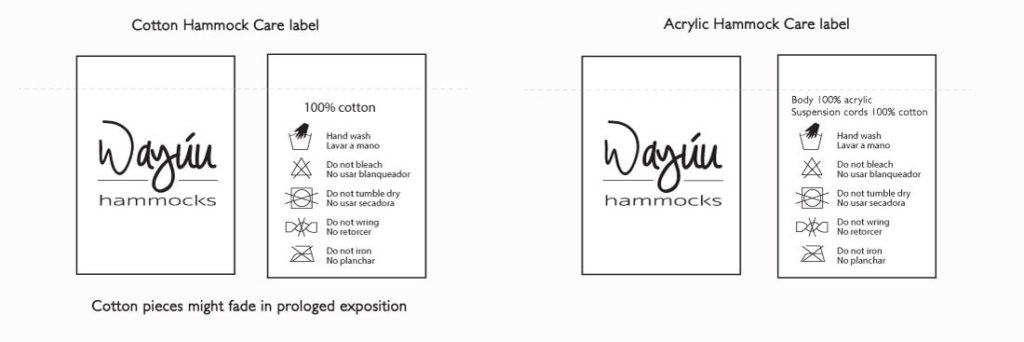HAMMOCKS 101
All the information you’ll need as a hammock owner.
Types of Hammocks: Hammocks vs. Chinchorros
A hammock is thick or thin and is usually made with a tighter vertical weave. A chinchorro has a cross-weave that gives it a lighter, more aerated feel. The chinchorro resembles a fishing net that is fundamental to the Wayuu culture.

The Anatomy of a Hammock

How to Lay in a Hammock
You can sit or lay in your hammock anyway you want, however, you will enjoy more comfort for a nap, reading or a long night of sleep if you hang it loose and use width of the hammock to lay flat on a 30 degree angle across the hammock that way you will ensure zero pressure points.
Weight capacity
Weight capacity depends on the design, some hammocks are bigger than others, also the type of yarn affects the overall resistance of a piece.
We have a range of 300 pounds to 450 pounds.
For more specific information look at the description of each piece on the product detail.
Recommended distance between hanging points
When hanging your hammock, is important to consider the distance between hanging points.
The proper distance would avoid your hammock to be too tight or too loose.
The natural curve of the hammock is crucial to make it a zero pressure point surface that makes hammocks a perfect relaxation tool.
HAMMOCK HANGING FORMULA
Total hammock length – 23.5” = recommended distance between hanging points
This is not a strict rule, for instance you can have a bigger distance between two walls in your house, but you can make that distance shorter by using rope on each end and shorten the inicial length.
Make sure you go back to the formula when deciding the length of the rope and try to get the “recommended distance between hanging points”
How to Clean a Hammock
Soak in warm water with mild soap, spot clean with a soft-bristle brush (or a toothbrush), then rinse!
Each of the hammock we sell come with a tag with instructions on how to care for your hammock.


